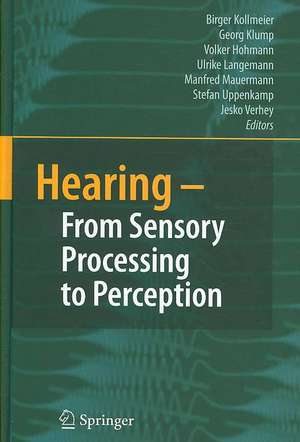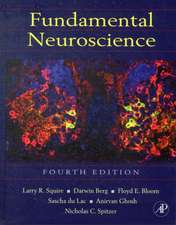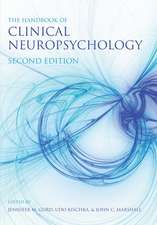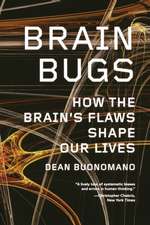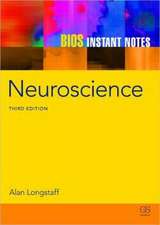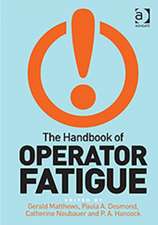Hearing - From Sensory Processing to Perception
Editat de B. Kollmeier, G. Klump, V. Hohmann, U. Langemann, M. Mauermann, S. Uppenkamp, J. Verheyen Limba Engleză Hardback – 18 sep 2007
| Toate formatele și edițiile | Preț | Express |
|---|---|---|
| Paperback (1) | 2101.51 lei 6-8 săpt. | |
| Springer Berlin, Heidelberg – 14 oct 2010 | 2101.51 lei 6-8 săpt. | |
| Hardback (1) | 1822.30 lei 38-44 zile | |
| Springer Berlin, Heidelberg – 18 sep 2007 | 1822.30 lei 38-44 zile |
Preț: 1822.30 lei
Preț vechi: 2397.76 lei
-24% Nou
Puncte Express: 2733
Preț estimativ în valută:
348.74€ • 362.75$ • 287.91£
348.74€ • 362.75$ • 287.91£
Carte tipărită la comandă
Livrare economică 11-17 aprilie
Preluare comenzi: 021 569.72.76
Specificații
ISBN-13: 9783540730088
ISBN-10: 3540730087
Pagini: 580
Ilustrații: XIV, 565 p.
Dimensiuni: 210 x 297 x 36 mm
Greutate: 0.92 kg
Ediția:2007
Editura: Springer Berlin, Heidelberg
Colecția Springer
Locul publicării:Berlin, Heidelberg, Germany
ISBN-10: 3540730087
Pagini: 580
Ilustrații: XIV, 565 p.
Dimensiuni: 210 x 297 x 36 mm
Greutate: 0.92 kg
Ediția:2007
Editura: Springer Berlin, Heidelberg
Colecția Springer
Locul publicării:Berlin, Heidelberg, Germany
Public țintă
ResearchDescriere
Hearing – From Sensory Processing to Perception presents the papers of the latest “International Symposium on Hearing”, a meeting held every three years focusing on psychoacoustics and the research of the physiological mechanisms underlying auditory perception. The proceedings provide an up-to-date report on the status of the field of research into hearing and auditory functions.
The 59 chapters treat topics such as: the physiological representation of temporal and spectral stimulus properties as a basis for the perception of modulation patterns, pitch and signal intensity; spatial hearing and the physiological mechanisms of binaural processing in mammals; integration of the different stimulus features into auditory scene analysis; physiological mechanisms related to the formation of auditory objects; speech perception; and limitations of auditory perception resulting from hearing disorders.
The 59 chapters treat topics such as: the physiological representation of temporal and spectral stimulus properties as a basis for the perception of modulation patterns, pitch and signal intensity; spatial hearing and the physiological mechanisms of binaural processing in mammals; integration of the different stimulus features into auditory scene analysis; physiological mechanisms related to the formation of auditory objects; speech perception; and limitations of auditory perception resulting from hearing disorders.
Cuprins
Cochlea/Peripheral Processing.- Influence of Neural Synchrony on the Compound Action Potential, Masking, and the Discrimination of Harmonic Complexes in Several Avian and Mammalian Species.- A Nonlinear Auditory Filterbank Controlled by Sub-band Instantaneous Frequency Estimates.- Estimates of Tuning of Auditory Filter Using Simultaneous and Forward Notched-noise Masking.- A Model of Ventral Cochlear Nucleus Units Based on First Order Intervals.- The Effect of Reverberation on the Temporal Representation of the F0 of Frequency Swept Harmonic Complexes in the Ventral Cochlear Nucleus.- Spectral Edges as Optimal Stimuli for the Dorsal Cochlear Nucleus.- Psychophysical and Physiological Assessment of the Representation of High-frequency Spectral Notches in the Auditory Nerve.- Pitch.- Spatio-Temporal Representation of the Pitch of Complex Tones in the Auditory Nerve.- Virtual Pitch in a Computational Physiological Model.- Searching for a Pitch Centre in Human Auditory Cortex.- Imaging Temporal Pitch Processing in the Auditory Pathway.- Modulation.- Spatiotemporal Encoding of Vowels in Noise Studied with the Responses of Individual Auditory-Nerve Fibers.- Role of Peripheral Nonlinearities in Comodulation Masking Release.- Neuromagnetic Representation of Comodulation Masking Release in the Human Auditory Cortex.- Psychophysically Driven Studies of Responses to Amplitude Modulation in the Inferior Colliculus: Comparing Single-Unit Physiology to Behavioral Performance.- Source Segregation Based on Temporal Envelope Structure and Binaural Cues.- Simulation of Oscillating Neurons in the Cochlear Nucleus: A Possible Role for Neural Nets, Onset Cells, and Synaptic Delays.- Forward Masking: Temporal Integration or Adaptation?.- The Time Course of Listening Bands.- Animal Communication.- Frogs Communicate with Ultrasound in Noisy Environments.- The Olivocochlear System Takes Part in Audio-Vocal Interaction.- Neural Representation of Frequency Resolution in the Mouse Auditory Midbrain.- Behavioral and Neural Identification of Birdsong under Several Masking Conditions.- Intensity Representation.- Near-Threshold Auditory Evoked Fields and Potentials are In Line with the Weber-Fechner Law.- Brain Activation in Relation to Sound Intensity and Loudness.- Duration Dependency of Spectral Loudness Summation, Measured with Three Different Experimental Procedures.- Scene Analysis.- The Correlative Brain: A Stream Segregation Model.- Primary Auditory Cortical Responses while Attending to Different Streams.- Hearing Out Repeating Elements in Randomly Varying Multitone Sequences: A Case of Streaming?.- The Dynamics of Auditory Streaming: Psychophysics, Neuroimaging, and Modeling.- Auditory Stream Segregation Based on Speaker Size, and Identification of Size-Modulated Vowel Sequences.- Auditory Scene Analysis: A Prerequisite for Loudness Perception.- Modulation Detection Interference as Informational Masking.- A Paradoxical Aspect of Auditory Change Detection.- Human Auditory Cortical Processing of Transitions Between ‘Order’ and ‘Disorder’.- Wideband Inhibition Modulates the Effect of Onset Asynchrony as a Grouping Cue.- Discriminability of Statistically Independent Gaussian Noise Tokens and Random Tone-Burst Complexes.- The Role of Rehearsal and Lateralization in Pitch Memory.- Binaural Hearing.- Interaural Correlation and Loudness.- Interaural Phase and Level Fluctuations as the Basis of Interaural Incoherence Detection.- Logarithmic Scaling of Interaural Cross Correlation: A Model Based on Evidence from Psychophysics and EEG.- A Physiologically-Based Population Rate Code for Interaural Time Differences (ITDs) Predicts Bandwidth-Dependent Lateralization.- A ?-Limit for Coding ITDs: Neural Responses and the Binaural Display.- A ?-Limit for Coding ITDs: Implications for Binaural Models.- Strategies for Encoding ITD in the Chicken Nucleus Laminaris.- Interaural Level Difference Discrimination Thresholds and Virtual Acoustic Space Minimum Audible Angles for Single Neurons in the Lateral Superior Olive.- Responses in Inferior Colliculus to Dichotic Harmonic Stimuli: The Binaural Integration of Pitch Cues.- Level Dependent Shifts in Auditory Nerve Phase Locking Underlie Changes in Interaural Time Sensitivity with Interaural Level Differences in the Inferior Colliculus.- Remote Masking and the Binaural Masking-Level Difference.- Perceptual and Physiological Characteristics of Binaural Sluggishness.- Precedence-Effect with Cochlear Implant Simulation.- Enhanced Processing of Interaural Temporal Disparities at High-Frequencies: Beyond Transposed Stimuli.- Models of Neural Responses to Bilateral Electrical Stimulation.- Neural and Behavioral Sensitivities to Azimuth Degrade with Distance in Reverberant Environments.- Speech and Learning.- Spectro-temporal Processing of Speech – An Information-Theoretic Framework.- Articulation Index and Shannon Mutual Information.- Perceptual Compensation for Reverberation: Effects of ‘Noise-Like’ and ‘Tonal’ Contexts.- Towards Predicting Consonant Confusions of Degraded Speech.- The Influence of Masker Type on the Binaural Intelligibility Level Difference.- Erratum.
Caracteristici
Includes supplementary material: sn.pub/extras
